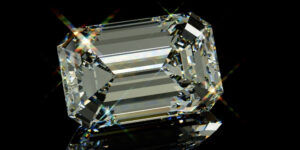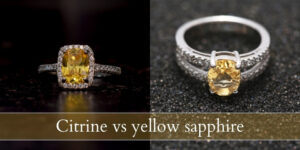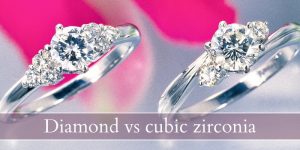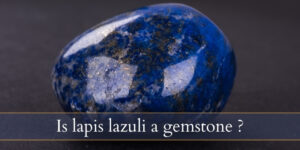Garnet and spinel are two of them most famous ruby substitute you’ve heard of, and for good reason. They both offer deep shades of red, only they do so differently, and thus may be more or less convincing. Another important factor is the price, as both are far more affordable than a ruby. But which would be better ?
Today we’re taking a look at garnet vs spinel in general, but will be paying especially close attention to how well they could simulate a ruby. Keep in mind that garnet and spinel are both gemstones in their own right, so they have quite a few things going for them. So let’s take a look.
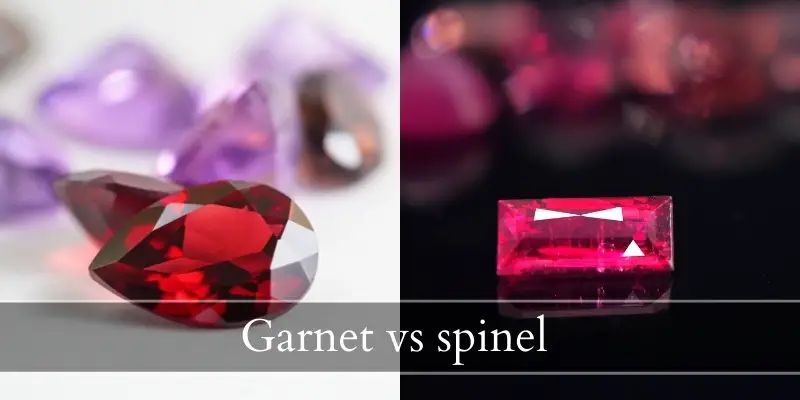
Garnet vs spinel
Garnets are softer than spinels, and are also much more affordable than spinels. Spinels tend to have the better color, at least in the red shades and are a more believable ruby dupe than garnet. Spinels are harder to find at a jeweler, so you will find garnets much easier if you want to mount it in jewelry. Spinels are also one of the August birthstones, while garnet is the dedicated January birthstone.
What is garnet ?
Garnet is a type of silicate mineral, a family comprising of several types. The most common garnets are almandine and pyrope, and both have red body color. Almandine shows a bit of pink/purple tings, while pyrope tends to show only red with vague hints of yellow. You may also find rhodolite garnet, which is the perfect blend between pyrope and almandine. There are other types of garnet with other colors such as green or yellow, but for the purposes of this comparison we’re focusing on the red varieties.
What is spinel ?
Spinel is the group name for minerals with a very specific crystal structure, though red spinels are the most well known of these. This is a very old gemstone, which was often confused or lumped in together with rubies until about 3 centuries ago. The most famous spinel is the Black Prince’s ruby, which is a very large irregular red spinel cabochon set onto the Imperial State Crown of the United Kingdom.
Read also: Ruby VS Rubellite
Now let’s take a look at a garnet and spinel comparison, and pay extra attention to how they’d be able to simulate a ruby.
1. Spinel is more expensive than garnet
Price is always important when discussing gemstones. Spinels are quite expensive, mostly because they’ve been associated with rubies for so long that their worth has gone up just for that. Spinels also show exceptional color and clarity, which is always important for a colored gemstone.
A red spinel sells for about $1,800 per carat. This is for a gem with very good color saturation and very good clarity (eye-clean). Red spinels that show more of an orange tint, or a very dark red towards brown, they always sell for less, such as $900 per carat or lower.
Garnets sell for far less, falling within the $300-600 range per carat. Great color seems to be common, but the clarity varies the price very much, as well as any possible treatments (usually heat treated). Like any other gem, a natural unheated garnet will fetch a higher price. It also appears that almandine garnets, the ones with a slight pink/purple hue, tend to have the lower price per carat as they stray the farthest from rubies.
So if you’re looking for a ruby dupe, garnets will be more affordable, provided you get a really good color pyrope or rhodolite. Keep in mind that rubies can be a little pink, but they are usually very cloudy when pink so a very pink almandine won’t work because it’s too clear and dark.
2. Garnet is a softer gemstone than spinel
A gemstone’s hardness matters a whole lot, because it tells you how likely it is to withstand scratches and chipping. The higher the hardness rating (on the Mohs scale), the harder and stronger the gemstone. Spinel is a harder gemstone, scoring an 8 on the Mohs scale. Garnets are 7.5, which is not very far behind but it can make a difference when wearing your gem for a long time.
Both garnet and spinel are softer than rubies, which have a 9 rating on the Mohs scale. But spinels are a little harder so they will scratch less.
3. Spinel is August’s birthstone, garnet is for January
If you’re still unsure which gemstone to pick, then perhaps looking at the associations with birth months might help. This doesn’t have much to do with how well they replace a ruby, but it might help you pick one over the other.
Garnet is the dedicated January birthstone. It can be any garnet but the most common and sought after is a red garnet. Spinel is one of the newer birthstones for the month of August, the other two being peridot and sardonyx.
Now these were the key differences between garnet and spinel. Now let’s take a look at their similarities, because these matter as well.
Both spinel and garnet have great clarity
A gemstone’s clarity matters a lot when you’re thinking of wearing it. A good clarity gem will show the color much better than a cloudy one. In this respect both garnets and spinels are very good clarity gems. Oh you can find included or cloudy ones just as well, but you will usually find them eye-clean or almost eye-clean.
Between the two, spinels have a slight advantage over garnets, as garnets may have small inclusions such as bubbles or small cracks here and there.
Both spinel and garnet have good refractive indexes
A gem’s refractive index is key when it comes to how much it will sparkle. Neither garnet nor spinel have a refractive index as high as diamond (2.42) so they won’t shine a rainbow back at you. But they have the same refractive index as a ruby (1.7) which makes them all equal. Spinels can sometimes get a slightly higher RI of 1.9 but that is not the usual case.
Is garnet or spinel better as a ruby substitute ?
Spinel is a better ruby substitute, as it has the more appropriate color and it does not flash purple, orange, or pink. When held up to the light a re spinel will have a red body color and will flash only red. A spinel’s clarity is very good, as is its refractive index, but it’s the color that really makes it the better option.
If you’d like another option for a ruby substitute, you can try a synthetic ruby. These are lab-grown rubies, and they always have a better color with less inclusions. They are about the same price as a very fine spinel, but are much closer to a ruby than a spinel. Well, they’re essentially the same thing as a ruby, only grown in a controlled environment.

I’m the main author for jewelrymaterialguide.com. I started this site after we did tons of research before our wedding and noticed that there is information about rings, jewelry, and so on that is really hard to find on the internet.

